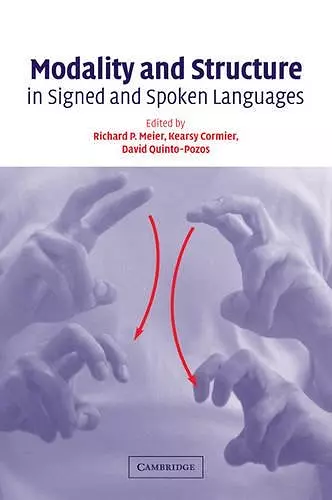Modality and Structure in Signed and Spoken Languages
Richard P Meier editor Kearsy Cormier editor David Quinto-Pozos editor
Format:Paperback
Publisher:Cambridge University Press
Published:4th Jun '09
Currently unavailable, and unfortunately no date known when it will be back
This paperback is available in another edition too:
- Hardback£94.00(9780521803854)

Signed languages are the visual-gestural languages of deaf communities. This book investigates their linguistic properties.
Signed languages are the naturally evolved visual-gestural languages of deaf communities. There is no international sign language: this book investigates the linguistic properties of many sign languages - British, Mexican, Hong Kong, German - and the extent to which linguistic structure is influenced by whether a language is signed or spoken.The realisation that signed languages are true languages is one of the great discoveries of linguistic research. The work of many sign language researchers has revealed deep similarities between signed and spoken languages in their structure, acquisition and processing, as well as differences, arising from the differing articulatory and perceptual constraints under which signed languages are used and learned. This book provides a cross-linguistic examination of the properties of many signed languages, including detailed case studies of Hong Kong, British, Mexican and German sign languages. The contributions to this volume, by some of the most prominent researchers in the field, focus on a single question: to what extent is linguistic structure influenced by the modality of language? Their answers offer particular insights into the factors that shape the nature of language and contribute to our understanding of why languages are organised as they are.
'For those researchers willing to ask the modality question, this volume will be an excellent resource.' First Language
ISBN: 9780521112581
Dimensions: 229mm x 152mm x 28mm
Weight: 730g
500 pages